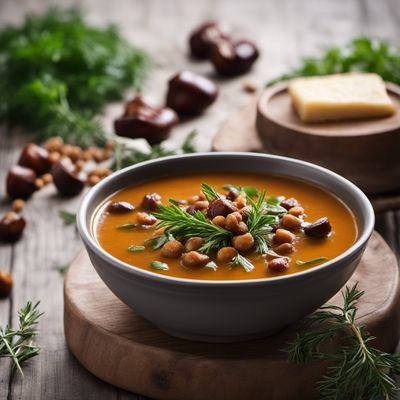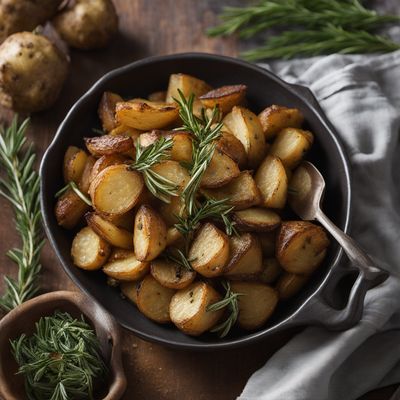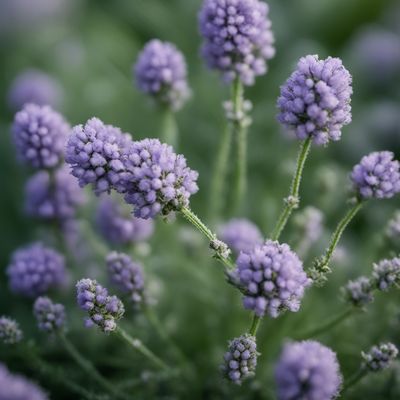
Ingredient
Rosemary
The Fragrant Herb: Rosemary's Aromatic Allure
Rosemary is a woody herb with needle-like leaves that have a strong, pine-like fragrance. It has a slightly bitter and astringent taste, with hints of citrus and camphor. The leaves are evergreen and have a firm texture. When used in cooking, rosemary imparts a robust flavor and a pleasant aroma to dishes.
Origins and history
Rosemary has a rich history dating back to ancient civilizations like the Greeks and Romans. It was considered a sacred herb and was associated with love, remembrance, and protection. Rosemary was used in various cultural practices, including weddings, funerals, and religious ceremonies. Today, it is widely cultivated in Mediterranean regions and is a popular herb in Mediterranean and European cuisines.
Nutritional information
Rosemary is a good source of antioxidants, vitamins A and C, and minerals like iron and calcium. It also contains compounds with potential anti-inflammatory and antimicrobial properties. However, due to its strong flavor, rosemary is typically used in small quantities, so its nutritional impact is limited.
How to select
When selecting fresh rosemary, look for vibrant green leaves that are free from wilting or browning. The stems should be firm and not dried out. If buying dried rosemary, ensure that it is stored in an airtight container and has a strong aroma. Avoid purchasing wilted or discolored rosemary.
Storage recommendations
To keep rosemary fresh, store it in the refrigerator wrapped in a damp paper towel or in a plastic bag with air holes. Alternatively, place the stems in a glass of water like a bouquet and cover it loosely with a plastic bag. Fresh rosemary can last up to 2 weeks when stored properly. Dried rosemary should be kept in an airtight container in a cool, dark place and can retain its flavor for up to 6 months.
How to produce
Rosemary can be easily grown in home gardens or pots. It thrives in well-drained soil and requires full sun exposure. Regular pruning helps maintain its shape and encourages new growth. Rosemary can also be propagated from cuttings or purchased as young plants from nurseries or garden centers.
Preparation tips
Rosemary leaves can be used whole, chopped, or crushed to release their flavor. It is commonly used as a seasoning for roasted meats, poultry, and vegetables. Rosemary-infused oil or vinegar can add a fragrant touch to dressings or marinades. The herb can also be used to flavor bread, soups, stews, and sauces. When cooking with rosemary, it is recommended to remove the woody stems before serving.
Substitutions
Thyme, oregano, or marjoram can be used as substitutes for rosemary, although they have slightly different flavor profiles. Thyme has a similar earthy and slightly minty taste, while oregano and marjoram have a milder and sweeter flavor. However, these substitutions may alter the overall taste of the dish.
Culinary uses
Rosemary is a versatile herb used in various cuisines worldwide. It is commonly found in Mediterranean dishes like roasted lamb with rosemary, grilled vegetables with rosemary, or rosemary-infused olive oil. It is also used in Italian cuisine for flavoring pasta sauces, pizzas, and focaccia bread. In addition, rosemary is a popular ingredient in French cuisine, where it is used in dishes like herbes de Provence, bouillabaisse, or ratatouille.
Availability
Rosemary is widely available in Mediterranean countries like Italy, France, Spain, and Greece. It is also cultivated in other regions with suitable climates, including the United States, Australia, and South Africa.
More ingredients from this category
Recipes using Rosemary » Browse all

Bosnian Coq au Vin
Sarajevo Chicken Delight

Croatian-style Focaccia
Dalmatian Delight Focaccia

Stuffed Duck with Novarese Style
Savory Delight: Stuffed Duck with a Taste of Novarese

Sweet and Sour Rabbit
Tangy Delight: Sweet and Sour Rabbit Recipe

Prigorska Pogača with a Twist
Savory Croatian Cheese Bread: A Delicious Twist on Prigorska Pogača

Virov'tički Krumpir Kolač with a Twist
Savory Croatian Potato Cake: A Delightful Twist on Tradition

Zuppa di Ceci e Castagne with a Twist
Hearty Chestnut and Chickpea Soup: A Warm Delight from Italy

Turducken Delight
The Ultimate Turducken Extravaganza

Schiacciata con l'uva - Italian Grape Focaccia
Grape Harvest Delight: A Sweet and Savory Italian Focaccia

Occitan-style Grilled Prawns with Aioli
Grilled Delicacy from the Occitan Coast: Succulent Prawns with Creamy Aioli

Poutchine au Sac
Savory French Stuffed Pouches

New England Style Roasted Potatoes
Savory Herb-Roasted Potatoes: A Taste of New England
